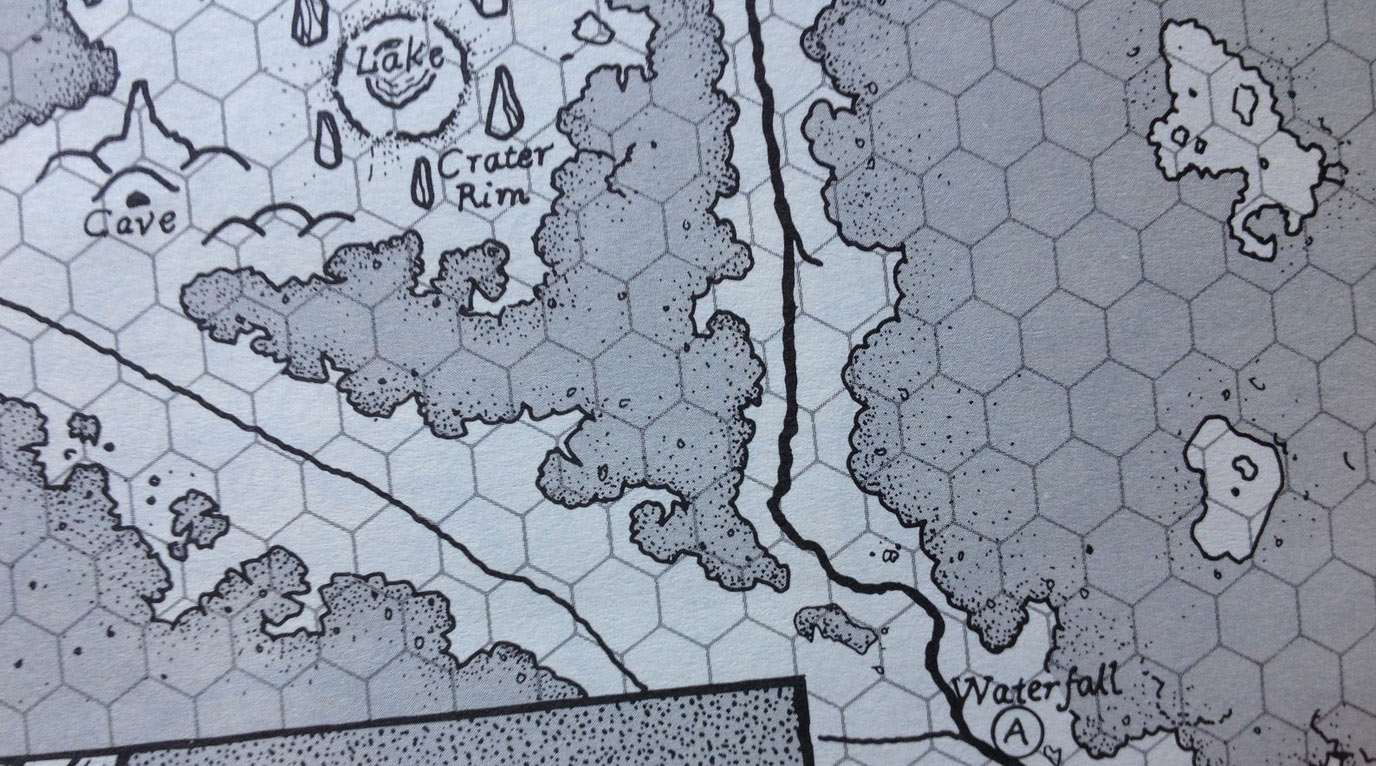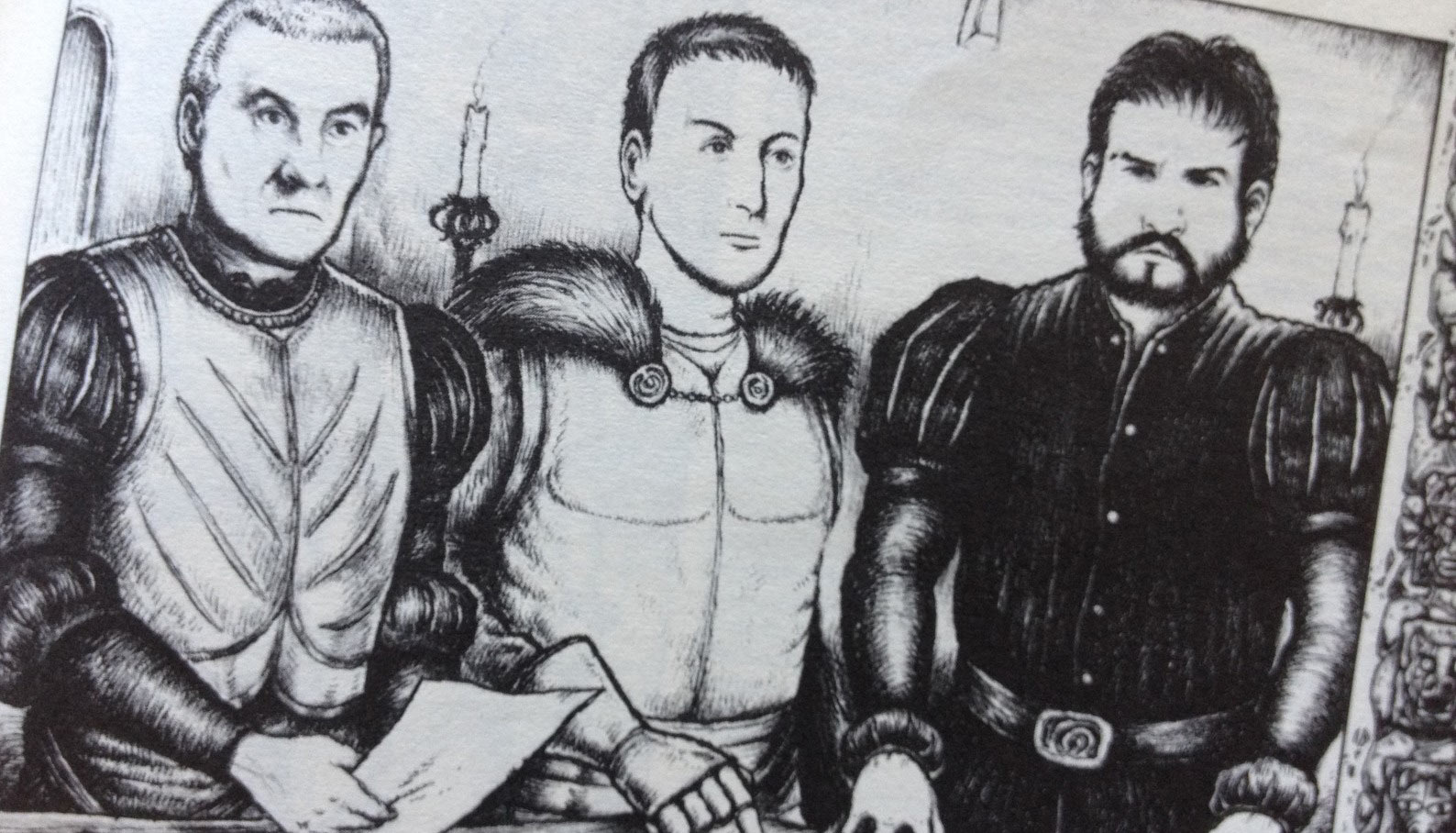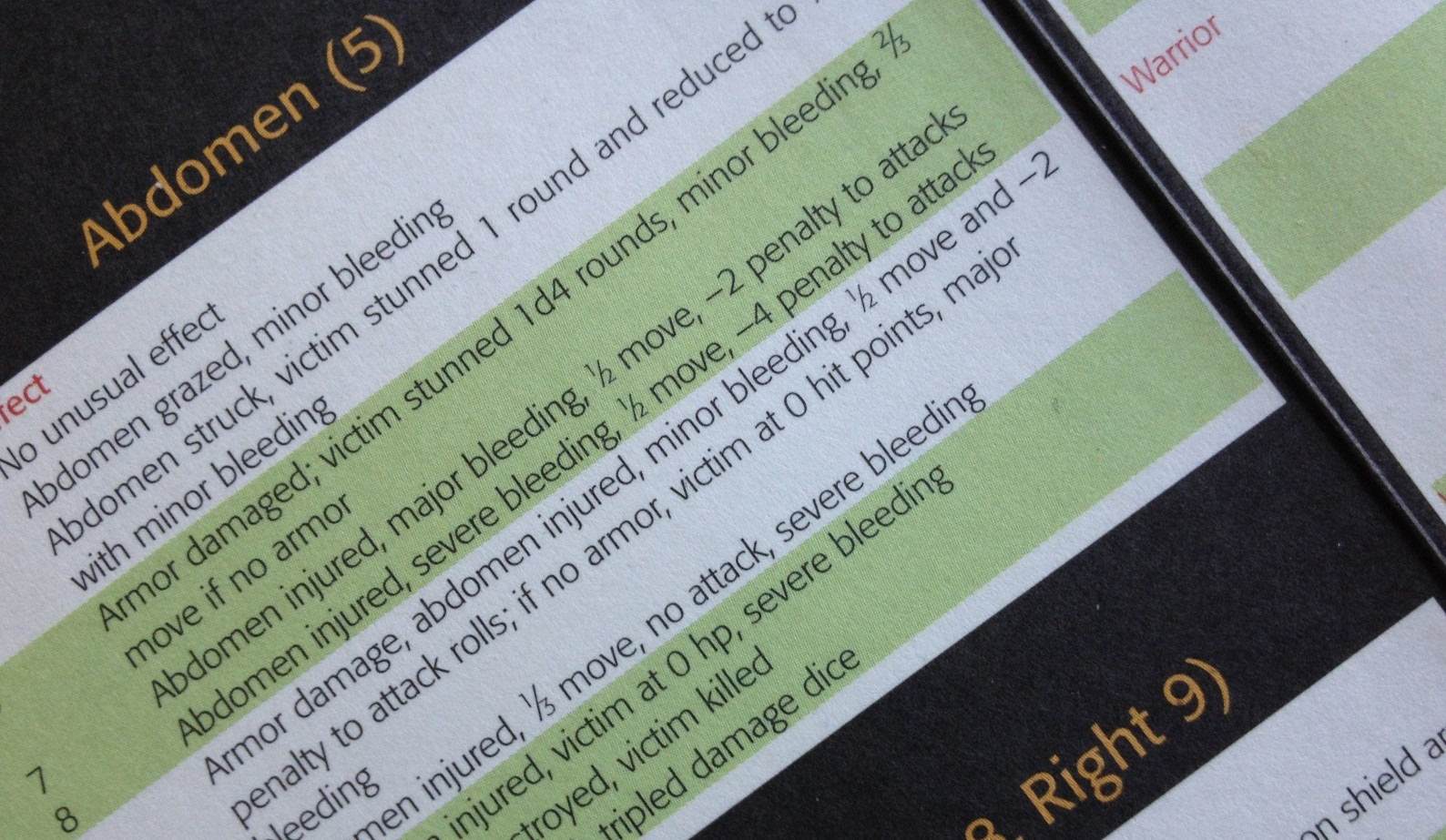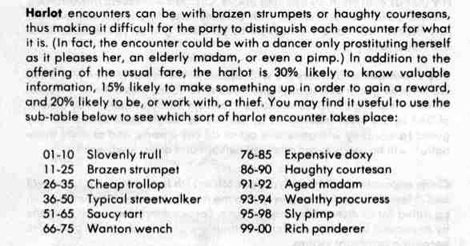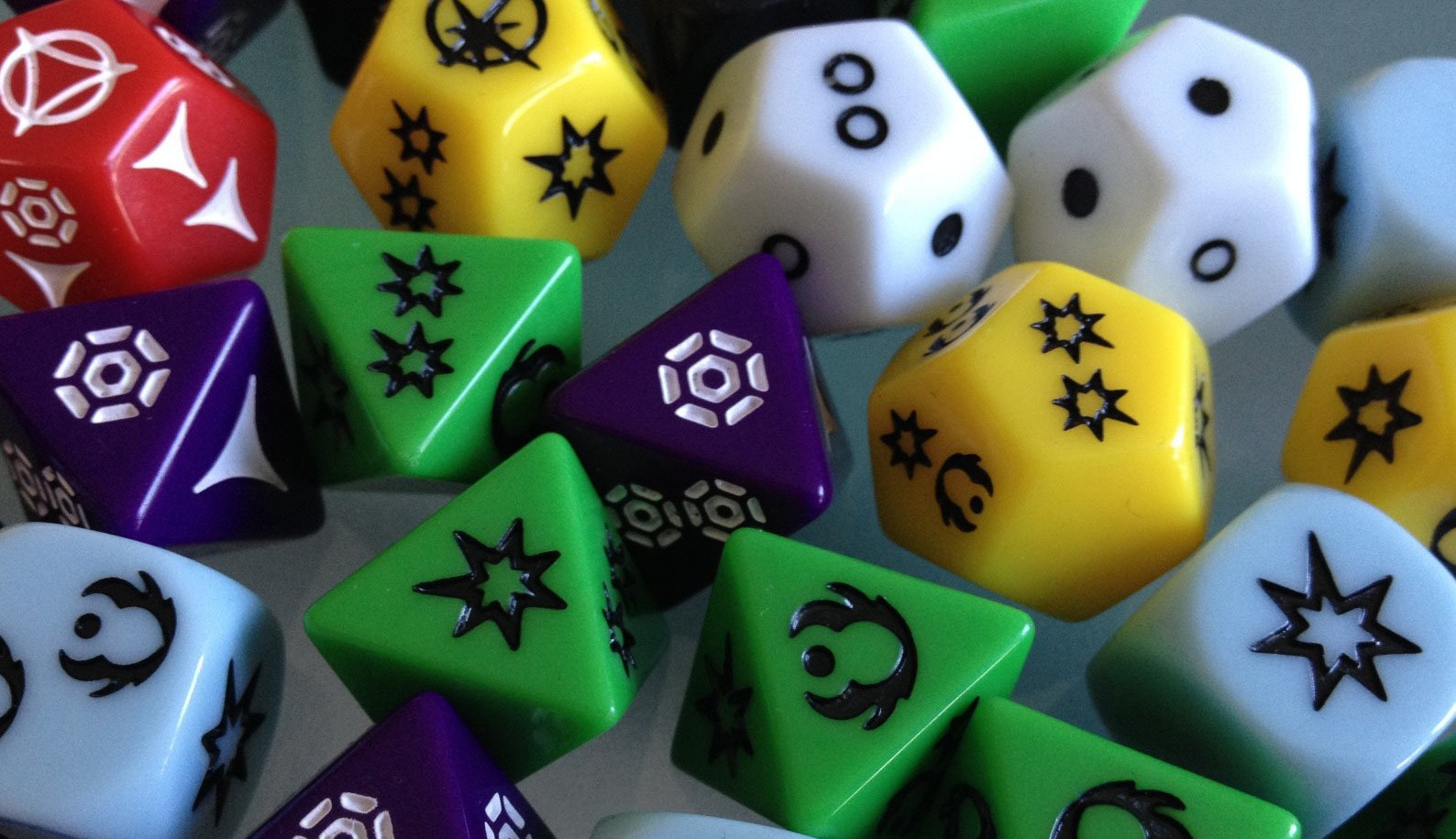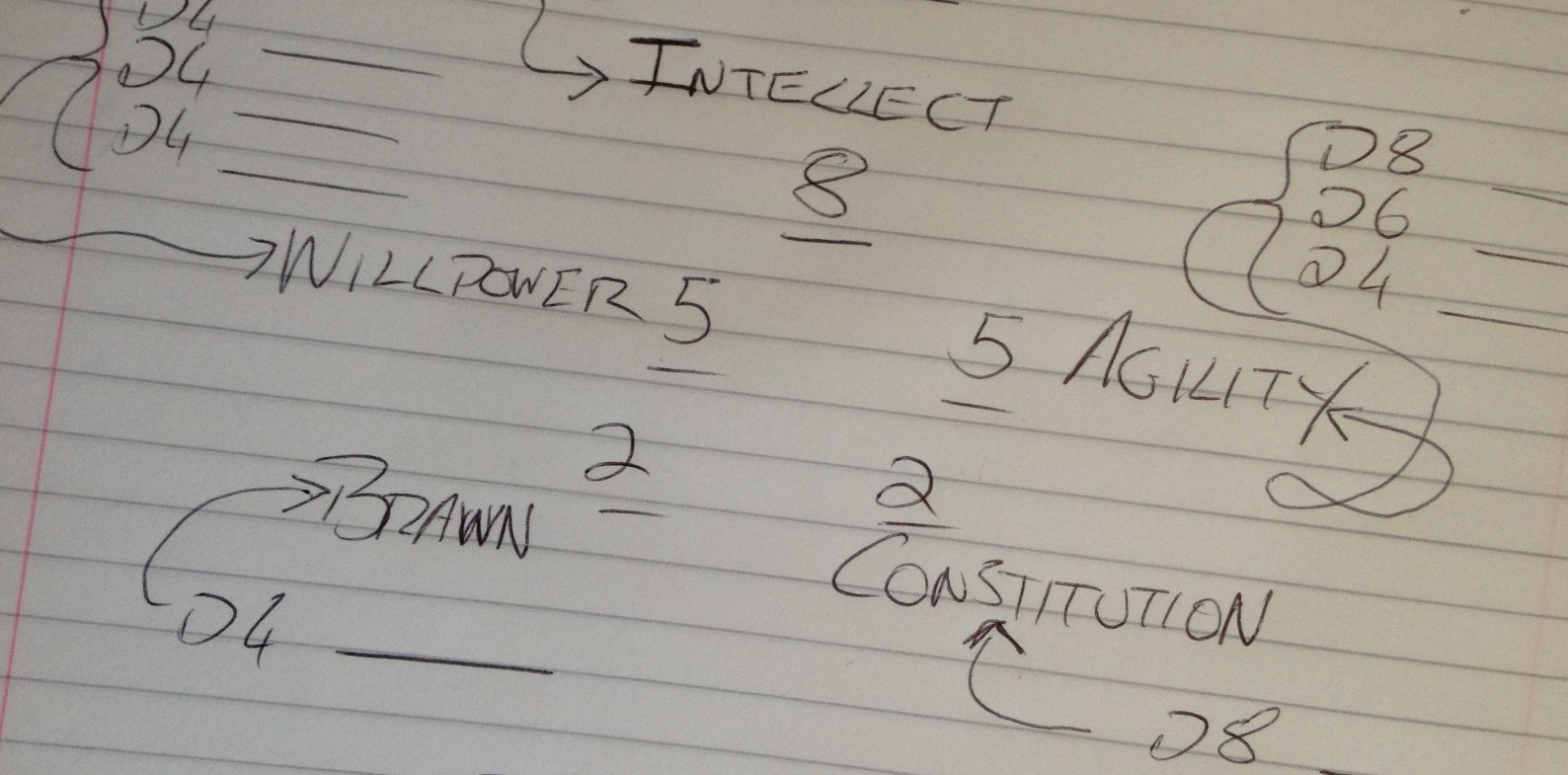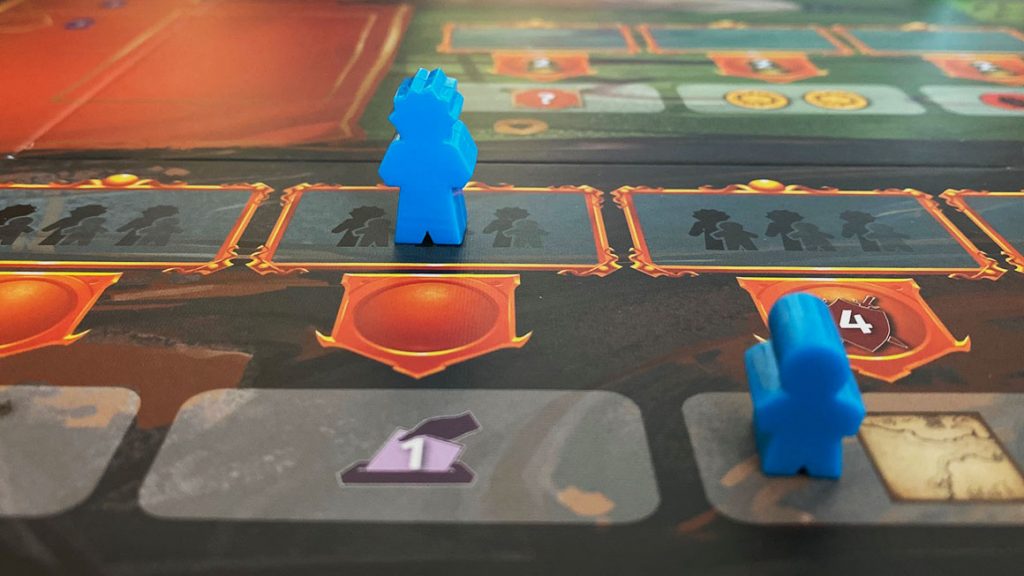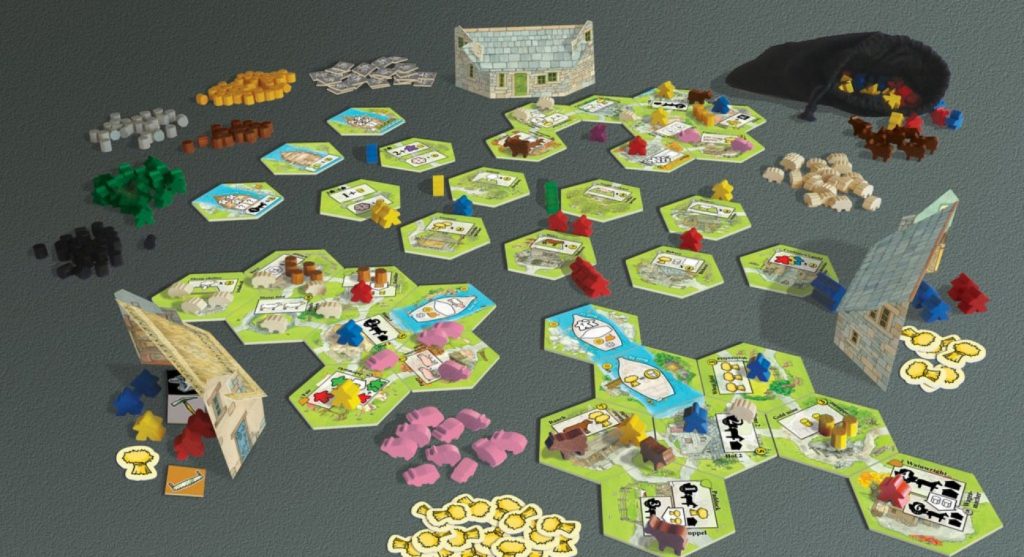Paul: Hello! Welcome! I am so, so sorry to have kept you waiting. Come in! Take off your shoes! That’s it, though, don’t take anything else off.
My last RPG Design Diary was ages back now and, I have to admit, I completely underestimated the time it would take for me to put something functional together for you to look at, to even start to play around with. Nevertheless, I said that I would and I was determined that I would. I didn’t so much put my nose to the grindstone as headbutt that grindstone, but still, that’s how progress is made.
As you probably know, we took the advice that several readers gave us and we decided that, yes, actually, we would start playing some of the new Star Wars RPG, thanksverymuch. I spent a lot of time thinking about dice. I spent a lot of time thinking about stats. I might have something to show you all.
Okay, so, the first thing I decided was that I wanted a system where characters had both stats and skills. This is a pretty standard RPG set-up. Stats are the numbers that broadly define a character, while skills are the specific things that they can do. For example, you might have Dexterity and then you might have Climbing, with the latter somehow dependent on the former. If you’re naturally dextrous, you’re better suited to climbing.
If you’ve played any incarnation of Dungeons & Dragons you’ll be used to its six classic stats: Strength, Dexterity, Constitution, Intelligence, Wisdom, Charisma. These stats then modify the skills associated with them, which can gradually be ranked up. If your Intelligence is huge, you’ll likely be better at, say, Lore-related things, starting with a bonus in that area. Even if it’s not huge, though, you can still gradually rank that skill up over time. Stats give you character inclinations, but they don’t solely determine development. You can gradually build a knowledgeable strongman or a dextrous wizard.
From the start, I knew that six stats was too many for me. At first, I thought of three or four. Three could even expand into two sub-stats for each, because I could have two Mental stats, two Physical stats and two Personality stats. Except, wait, I’m back up to six again. Four would be tighter, perhaps with two physical and two mental, but then I thought about how much I wanted these stats to be quite distinct and different. How I wanted an amount of balancing and how being strong in one might actually tip your balance away from the others. How I wanted people to build quite distinct characters. Y’see, I started thinking about the number five and about, of all things, Magic: The Gathering.
I haven’t played much Magic. I haven’t played it in ages. But I do remember one very specific thing about it. That was a friend of mine telling me that the five colours in the game formed a sort of ring of relationships. The five colours had their places in a circle. Choose any colour and the two colours that were neighbouring it were its friends. The two opposite didn’t get along so well. Could I do this with five stats and make them compliment and contradict in the same way?
So imagine a similar ring, but for stats. Clockwise, it goes Intellect – Agility – Constitution – Brawn – Willpower and a back round to Intellect. Each is somewhat related to its neighbours, but more distant than those that face it. Though your character might change and grow over time, when you first make them, these numbers affect each other quite significantly. Now, believe me, I spent a long time trying to work out how to do the next bit. I think this is my best, beta version so far.
You’re making your character with these stats. They’re rated out of ten. Your highest, which you get to pick, starts at six. The two next to it are five. The other two are four. You can now raise any stat you like, but with the understanding that the two opposite it have to be dropped by one. You can do this as many times as you like, but understand that this is always a net loss: you’re always losing two points for the one you gain. This way, you can end up building characters with stats like 7-6-4-3-2, 6-6-4-4-3 or even 8-5-5-2-2. Specialising, as it should, is going to cost you.
How badly is it going to cost you? Well, now we’re going to come to those skills. Skills are based off of stats and while a lot of systems use your stat as a boost or some sort of compliment for your skill, we’re not going to do that. Nah. We’re still going to say that each skill is tied to a stat, but we’re also going to say that the amount of skills you can have under each stat is the value of that stat. Halved. But rounding up.
So let’s say you picked Intellect for your six. Good for you! Your Agility and Willpower, both of which are closer to your higher brain functions than your Constitution and Brawn, were five. Your Constitution and Brawn were four. You boost Intellect twice to make it eight, reducing your Constitution and Brawn to two. You can now have one Brawn-based skill and one Constitution-based one. That’s your lot.
Of course, that doesn’t mean you can’t be good at those few, specific things, even that one thing. Who’s to say you’re not a wizard who can also run very fast, or an explorer who really knows how to swim? Perhaps even an inventor who’s still able to… lift heavy things? (Okay, so I don’t plan to make a Lifting skill.) Naturally, that boosted Intellect grants you several skills in that category. Four.
Now, I don’t want to get terribly specific with skills so they’ll stay somewhat broad in their range. That Intellect of eight lets you expand into four different fields of expertise, but those fields won’t be as specific as the difference between, say, bow-making and fletching. More general names like “Weaponsmithing,” “History,” and “Medicine” are what I’m looking for.
Each skill will have ranks, too, and the more ranks you have, the better you are at it, so you can still be good at, say, that one Brawn skill you have. Maybe really good, in time.
Before we go on, a few really important numbers are drawn from those five stats. Double your brawn to get an endurance value. Double your constitution to get a hit point value. Double your agility to get an initiative value (highest goes first? Intellect breaks ties, then coin flips?). I want to do something with Intellect and Willpower too, but I guess we’ll come to those in time. Perhaps a magic system…? Hmm.
So how do those skill ranks work? Well, I was talking a lot about dice last time and they’re still very much on my mind. After lots of readers commented, tweeted or contacted us to recommended Edge of the Empire, the new Star Wars RPG, we played it and, lo, you all ended up inspiring a campaign and even a podcast. Lots of people told me to check out the dice, which are all emblazoned with little symbols that mean success, failure, advantage or setback. It wasn’t quite what I was thinking of, but it was interesting. I also decided it was very much not what I wanted.
(Actually, as an aside, I feel it slows things down sometimes when the GM has to repeatedly improvise an outcome based on a die roll that means a strong success, but with bad luck, or a failure with a silver lining. It can be a lovely idea, but I’m frequently shit at it and in the context of some actions or situations, it can be rather bizarre. I’m aiming for an amount of simplicity and I don’t want my GMs to have to improvise three different answers to three different sort-of-failed Climb checks in a row.)
My first thought was that I wanted each rank to bump you up a die size: You start at D4, move to D6, D8, D10 and D12. The higher you roll, the better you do at the thing you’re doing. Typical tasks might have success numbers around three or four, but rising to seven or eight if they’re really tough. Rolling double that target number might have a special effect. Tripling it might be magnificent. The dice can explode, too, so if you roll their top value you get to roll them again and add on. Rolling a one is, of course, a lot like rubbing your eye after cutting chilli: always, always a disaster.
Then I remembered that I wanted coloured dice that allowed players to choose how risky they were going to be: a red, yellow and green. Some clever tinkering with success boundaries and the numbers on the faces of these dice might give players serious thought to whether they want to roll something riskier. There’s not much room on the D4s for variation, but the risky, red D6 could include two sixes and two ones, its safe and green cousin no sixes and no ones. D’ya see where this is going?
The problem arises when your target number is too easy to reach, where your choice is so easy that you pick a safe dice because it can let you roll a number you know you’ll get. My job, then, is to tweak the numbers so this doesn’t happen too much, so that just about every die roll has at least some element of risk or uncertainty. If it does turn out there’s no way to fail a particular skill check then, well, I guess that means you’re good enough at it anyway. Sometimes an automatic success doesn’t matter. Other times, you might want to reach for the red dice precisely because you want more from the situation. You want that higher possibility and even that chance the dice might explode.
Just think of a green D6 or even D8, their extremes replaced with more mid-range numbers, but still with some lows just teasing even the safest players, and how they contrast with a red D12 with a number distribution like 1-1-1-3-5-6-7-8-10-12-12-12. That’s the die of the skilled but desperate player, a player who, when they really feel they want to excel, can still turn a roll for a target number of four, five or six into a ridiculous risk. Why ever do that? Because the rewards for doubling or tripling would be worth it.
There’s one thing I haven’t yet covered. How many skill ranks should you start with? You’ll probably have around a dozen skill possibilities when you’re done halving and rounding up your stats and I would guess you probably want to be pretty good at, say, three or four of these. Each of these starts at its lowest rank, at D4, so let’s say you have ten ranks that you can distribute between them, each rank increasing a die size by one (D4 to D6, D6 to D8, etc). You can up them to a maximum of D10 to begin with.
So, you might end up with a character who looks like this:
Intellect 8
Skill 1 – D10 (three ranks)
Skill 2 – D8 (two ranks)
Skill 3 – D4 (no ranks)
Skill 4 – D4 (no ranks)
Agility 5
Skill 1 – D8 (two ranks)
Skill 2 – D6 (one rank)
Skill 3 – D4 (no ranks)
Constitution 2
Skill 1 – D8 (two ranks)
Brawn 2
Skill 1 – D4 (no ranks)
Willpower 5
Skill 1 – D4 (no ranks)
Skill 2 – D4 (no ranks)
Skill 3 – D4 (no ranks)
Here’s a character who’s smart, good with their hands and, with that Constitution skill, probably pretty hard in some way. Still, they have a lot of unranked skills (including a so far undeveloped Willpower) and, y’know what? I’m okay with that. I tried a bunch of different character templates and I think I like the idea of characters who start off with possibilities and general competence, but who are only really, really good at a couple of things. After all, a lot of us are probably like that and there’s only a few things we still find easy when we’re under pressure…
This is the framework I’ve come up with so far. No, none of those skills are named yet, but that’s for part four, where I’ll start a little world-building and tie those skills into the sort of things I imagine characters doing in the universe they inhabit. I also want to iron out the dice distributions and the target numbers, but there should be enough here for the most rudimentary of test games, right? Right?
Perhaps. Feel free to tell me I’m wrong. And where. Or just to start making up some characters and skills, rolling some dice and even seeing where a few skill checks leads you. This is a system I’m developing out in the open and I’m very, very happy for people to play around with it, pull it apart and see what works and what doesn’t.
I think I might be onto something here, but it’s still very early days. Anyway, if you want me, I’ll be crunching some numbers in my study. Do drop by and tell me what you think. Or even… what you’ve done.

